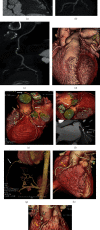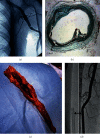The Use of Radial Artery for CABG: An Update
- PMID: 33928147
- PMCID: PMC8049807
- DOI: 10.1155/2021/5528006
The Use of Radial Artery for CABG: An Update
Abstract
We used the radial artery as a second target conduit for coronary artery bypass grafting since 1971. However, randomized clinical studies have demonstrated differences in clinical outcomes between the radial artery and other grafts because these trials are underpowered. As we proceed toward 50 years of experience with radial artery grafting, we examined the literature to define the best second-best target vessel for coronary artery bypass grafting. The literature was reviewed with emphasis, and a large number of randomized controlled trials, propensity-matched observational series, and meta-analyses were identified with a large patient population who received arterial conduit and saphenous vein grafts. The radial artery has been shown to be effective and safe when used as a second target conduit for coronary artery bypass grafting. Results and patency rates were superior to those for saphenous vein grafting. It has also been shown that the radial artery is a safe and effective graft as a third conduit into the territory of the artery right coronary artery. However, there is little evidence based on a few comparable series limiting the use of the gastroepiploic artery. In its fifth decade of use, we can finally deduced that the aorto-to-coronary radial bypass graft is the conduit of choice for coronary operations after the left internal thoracic artery to the left anterior descending artery.
Copyright © 2021 Francesco Nappi et al.
Conflict of interest statement
All authors declare no conflicts of interest.
Figures



References
Publication types
MeSH terms
LinkOut - more resources
Full Text Sources
Other Literature Sources
Medical
Research Materials

